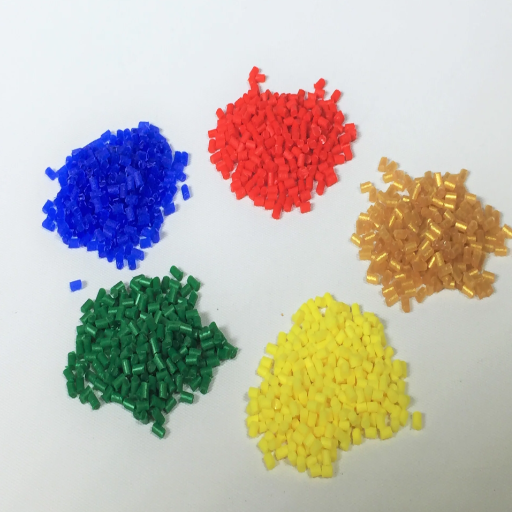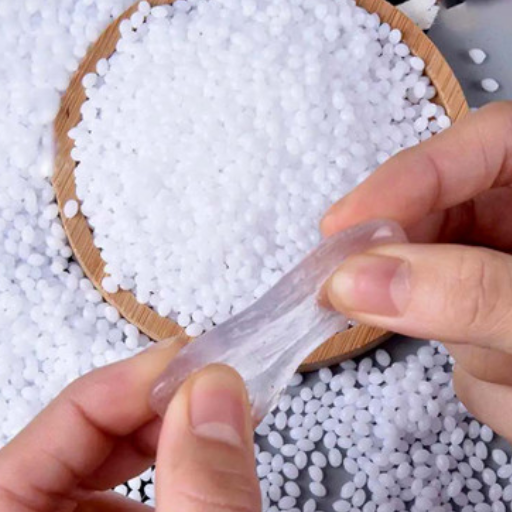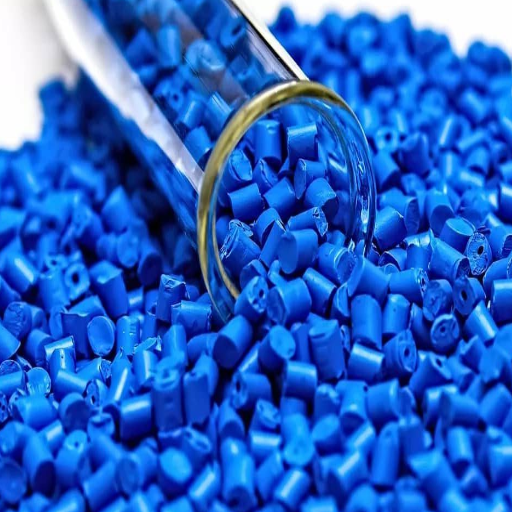Plastic manufacturing is a multifaceted industry that is very important in our daily lives. Whether in packaging materials, in advanced components used in the technology and automotive industries, or in other fields, plastics are ubiquitous. The objective of this blog post is to provide basic insight into the world of plastic manufacturing by discussing the various types of plastics along with the modern techniques used to manufacture them. First, we will consider the plastic materials and their major classifications which are thermo and thermo-setting plastics with their unique properties and uses. Afterward, we will discuss some of the main plastic manufacturing processes including injection molding, extrusion, and blow molding, and how these steps transform the plastic materials. Readers of this article will understand the fundamental concepts of the plastic manufacturing process, and its relevance to modern industries and to their daily lives.
What Are the Types of Plastic Used in Manufacturing?
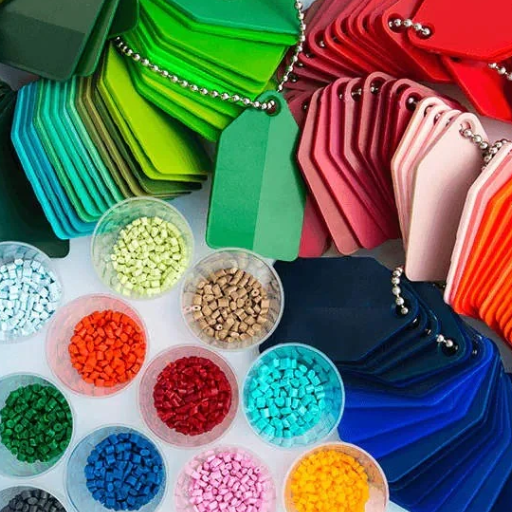
In manufacturing, plastics can be divided into two main categories: thermoplastics and thermosetting plastics. Thermoplastics are easily reformed after being heated such as in the case of polyethylene, polyvinyl chloride (PVC), and polystyrene. This made them widely used in multiple applications. Thermosetting plastics, on the other hand, epoxy, phenolic, and urea-formaldehyde resins, continue to harden once they have been set and tempered, this gives them excellent strength as well as a high resistance to heat. All of them serve a specific purpose with some of them being flexibility, durability, or even chemical resistance which is valuable to industries like packaging, automotive, construction, and electronics,
Common Types of Plastic
Two distinct types of plastics exist based on their reaction to heat – thermoplastics and thermosetting plastics. Below are some types of plastics with their uses given in a simplified manner:
Polyethylene (PE):
As one of the most popular types of pliable plastics in the world, polyethylene can be accustomed to stand bending, moisture, and shocks. This is the reason why it can be found in a multitude of products such as plastic packaging, bottles and bags.
Polypropylene (PP):
Withstandence to chemical and physical fatigue gives propylene its toughness as well as diversified uses in food containers, automotive parts, textiles and even medicine.
Polystyrene (PS):
PS represents styrofoam which contains air and can easily be cut into pieces. Such qualities make it ideal for use as disposable utensils. These same characteristics make it a good insulator.
Polyvinyl Chloride (PVC):
PVC is a tough plastic that is water and chemically resistant; hence, it is used for pipes, medical tubing, and window frames. It can be both rigid or flexible.
Polyethylene Terephthalate (PET):
PET is a strong yet lightweight and recyclable plastic. It is used for packaging food, bottles, and textiles. It is known for being clear and keeping its shape.
Acrylonitrile Butadiene Styrene (ABS):
ABS is strong for its lightweight and impact ease. It is used in many consumer products such as LEGO bricks, automotive parts, and electronic enclosures.
All such plastics are specially designed to serve different areas of industries. They all undergo a high level of scrutiny and testing before being deemed suitable for people’s day-to-day lives.
Thermosetting Plastics vs. Thermoplastics
The difference between the two groups of plastics called thermoplastic and thermosetting plastic, is in their response to heat. Toyo thermoplastic, like PE and PP, can be reshaped many times without altering them chemically or structurally, making them great for recycling use and industrial low-cost packaging. PE has a melting point of 115-135°C. Polypropylene can be reshaped 10-15 times and has a melting point of 130-171°C. Polystyrene can also be classified under these materials.
A thermosetting plastic usually is stronger, more rigid, and resistant to high temperatures. Example materials include electric insulation, epoxy resin, and phenolic resin, withstanding a whopping 250 degrees Celsius. Epoxy has a slightly higher tolerance at 250 Celsius. Thermal cycling leads to a continuous failure of these components. Due to these characteristics they cannot be remolded or reheated, going through a chemical reaction instead. This is the distinguishing feature that determines their applicability for different materials.
Choosing the Right Plastic Material for Your Product
Your product has application requirements with factors like the purpose and type of the plastic material. First, outline the most useful mechanical features needed like strength, flexibility, and impact resistance. Polyethylene thermoplastics assist with flexibility, while Phenolic resin thermosets support rigidity and heat resistance.
With a range of materials, toughness along durability is required in some cases. Other factors that need to be considered include the temperature, UV, and chemicals involved. For high impact along with heat-resistant applications, Polycarbonate works perfectly. Propolyproplyen provides ideal durability along with resistance to harsh chemicals. By considering the function, like food safety or biodegradability also works in some cases.
During the last stage, manufacturing and cost restrictions should be assessed. Typically, thermoplastics offer reusability and recyclability which works to reduce costs along with sustainability. This makes thermosets more applicable for one-time high-performance applications which come at a greater cost. Selecting the right materials for the application needed alongside conducting specific tests provides the best results.
How Does the Plastic Manufacturing Process Work?
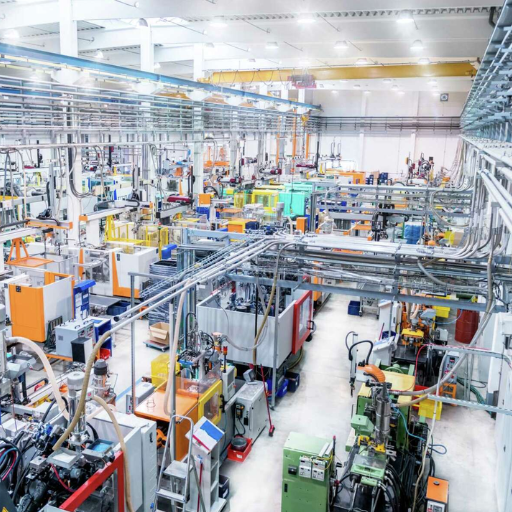
Creating plastic products uses several important methods that processes raw materials. The first step includes retrieving raw materials such as natural gas, biomass, and oil and transforming them into monomers. Following this process, the monomers undergo polymerization to chemically bond them together to form polymers. Once polymers have been created, they undergo melting processes which transform them into a usable form. The melting process can be done through extrusion, injection molding, blow molding, thermoforming, or even molding. Lastly, the product of the process shaped into a desired useable form is cooled to solidify the structure, finalize shape, and retain the desired aesthetic. Tailoring the process enables one to meet functional and aesthetic appeals.
Key Steps in the Plastic Manufacturing Process
Collection of Raw Materials
The first step in producing plastic involves gathering raw materials, primarily crude oil and natural gas. These resources are processed to make monomers like ethylene and propylene that serve as the building blocks for plastics.
Polymerization is the next stage
The crude oil and natural gas are just the beginning. To make plastics, units marked as monomers need to be converted into di and tri monomers through chemical bond formation known as polymerization. The resulting compound is qualified for a salt form purposeful for a product that has phases like silicone and acrylate (rubbery), urethane, and potentially elastomeric silicone. Through polymerization, polyethylenes and polypropylenes can be achieved, which are the basis for a lot of compounds needed in the industry.
Compounding and Formulation
This step involves adding the specified item into milled plastic. This item can be any stabilizer, color fixative, or even a filler. Because of these actions, the plastic would need to undergo fundamental changes when it comes to strength, endurance, or even just peeling a layer off its surface.
Shaping and Forming
Plastic becomes a product after going through a wide range of processes defined as heating it and then “injecting” the desired shape. The list of Appendices includes injection molding, extrusion, blow molding, and thermoforming. Regardless of which method you choose, it is guaranteed that the method you choose will redefine your goals in terms of product design.
Cooling and Solidifying
Shaping comes with a set of additional tasks, and these set of tasks ensure that the product retains the optimal desired structure features and sustains the requirement characteristics while in active use.
Finishing And Quality Control
The last step includes cutting, assembling, and polishing the item to the required standards. Important quality checks and control measures are implemented to verify consistency, safety, and adherence to set thresholds.
This all-including procedure makes it possible to manufacture many varieties of plastic products meant for different industries and uses.
Production Process for Creating Plastic Parts
Based on my experience, the processes for manufacturing plastic parts include several steps, which if done correctly, yield a result that is both precise and efficient. First is the choice of the polymer material for the part. Polyethylene, polypropylene or ABS are common materials, depending on the required application or performance durability, heat resistance, or flexibility.
Then, the material needs to be prepared for use. This can be done by processes such as drying or melting to meet neglected technical parameters like melt temperature which is between 160 degrees Celsius and 300 degrees Celsius for polymers.
Subsequently, the main manufacturing method is done; this could be through injection molding, extrusion, or thermoforming. A case in point is injection molding where mold temperatures are held between 30 degrees Celsius to 120 degrees celsius and the injection pressure set to anywhere between 10,000 to 30,000 psi, the end result will be the desired geometry of the part.
The last procedure includes trimming off excess material after the part has been produced. In the plastic value chain, these actions are categorized as “finishing” as well as quality control. The final inspection is done using calipers or CMMs (Coordinate Measuring Machines) which determine the dimensions and tolerances of the part. Following this procedure guarantees that there is compliance on all requirements set which is essential for parts that are designed for multiple uses.
Finishing Processes Used in Plastic Manufacturing
The finishing steps in plastic manufacturing are particularly important to augment the overall quality, functionality and aesthetics of plastic parts. Described below are some of the most popular plastic finishing processes along with their relevant technical details:
Trimming and Deflashing
To achieve the required geometry of a given part, it is mandatory to remove flashing and other protuberant features associated with it. The trimming operation can be performed manually or automatically with robotics, etc. Depending on the application and material, a typical tolerance of ±0.1 mm is applicable for trimmed parts.
Surface Polishing
An exceedingly smooth or glossy surface can further be acquired by polishing for visually important pieces. Mechanical polishing, vapor polishing, and flame polishing are some of the most common techniques used. For instance, flame polishing is suitable for acrylic pieces where softened top layers of the surface are removed using heat, producing a polished finish.
Deburring
Deburring is the process of removing burrs or small unwanted protruding features with the aid of an abrasive, tumbling, or cryogenic technique. In cryogenic deburring, the plastic part is cooled to very low temperatures (e.g., -100°C with liquid nitrogen). At these temperatures, unwanted flashes become brittle, thus easy to remove.
Painting and Coating
Certain plastic components may require external coating for aesthetic purposes. The coating can be achieved by UV curable coatings, powder painting, or spray painting. For maximum durability and bio-compatibility, the optimum thickness of the coatings is in the range of 10 to 50 microns.
Laser Engraving and Marking
Laser technology is used in marking or engraving parts for identification or branding purposes. For clear markings that do not ruin the structure of the part, a laser ray of 1064 nm is used (in the case of plastics).
Assembly and Welding
Due to the intended use, most plastic parts undergo assembly by Ultrasonic Welding or position of adhesives. The ultrasonic welding procedure also has parameters which do include a frequency range of 20-40 kHz and weld times of 0.5 to 2 seconds.
The completed procedures not only enhance the appearance of the plastic parts, but also make those parts more efficient for use in other industries such as automotive, electronics, medical devices, and more.
What Are the Common Manufacturing Methods for Plastics?
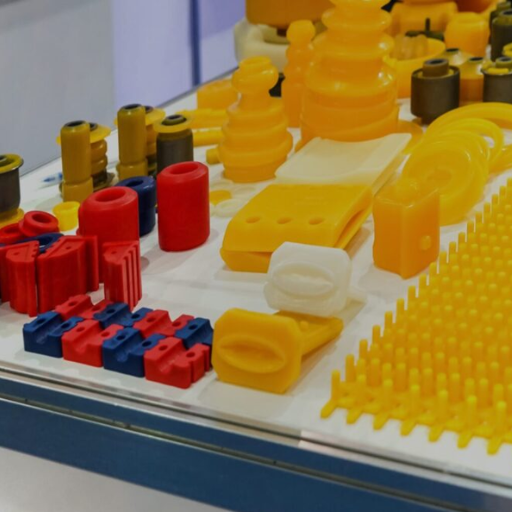
Different methods are used to mold plastics into a variety of desired products. For production on a large scale precision injection molding is ideal as it cools melted plastic into a cooled mold which serves for complex, detailed shapes. Smooth and long-shaped products such as sheets and pipes are best manufactured using extrusion which melts and adds heat to plastic through a die. To create hollow objects like bottles, blow molding which inflates molten thrash within a mold works best.
Packing food is best done using thermoforming which involves heating plastic sheets until soft and forming over a desired mold. While rotational molding on the other end serves best for creating large objects. For producing hollow parts with uniform thickness. The rotator heats and fills the mold with plastic resin, along with rotatory motion. Depending on the material to be used with its required level of strength, shape and required plastic volume the purpose of the method to be used is determined. Choosing a method ensures quality and utmost efficiency across all industries.
An Overview of Plastic Injection Molding
Plastic parts are produced in bulk using a technique called plastic injection molding. The first step is to heat plastic pellets until they turn into liquid. After that, the plastic needs to be placed in a mold which is then sealed under high pressure. The entire shape is then cooled and solidified in the mold. After this step the mold is opened and the product is ready. This technique is very effective and can be applied to many materials, shapes, and sizes.
Along with flexibility, the process is also efficient and affordable suitable for mass production. This business strategy can be used successfully for the automobile sector, medical instruments, and electronics. Some things that allow the inclusion of this procedure are making intricate designs quickly, reducing waste material, and completing tasks in a low amount of time.
Despite Fordering complex designs being a challenge, making the molding can be extremely expensive. Including other elements such dynamics of liquid flow and how plastic or other materials will shrink can make the entire process a struggle to meet industry standards. Suitable components paired with strategic designs allow, without a doubt, the meeting of said standards and many more.
The Plastic Extrusion Process
Plastic extrusion is a modern technique in manufacturing pipes, sheets, and films that have a uniform cross-sectional shape. This technique starts with raw plastic materials which are ordinarily in the shape of pellets or granules. These are placed in a hopper and then transported to the extruder. The raw plastic granules are heated, tempered, and blended in a rotating screw until they complete a molten state. The temperature control zones usually maintain temperatures between 200-275° C based on the type of plastic being used.
After the plastic is fully altered into molten form, it is pushed through a specialized die that shapes the material into the required profile. The product then cools and solidifies: this is done by passing it through a cooling system like a water bath or air cooler. After this step, the product is chopped or rolled to the desired size.
Exploring Additive Manufacturing for Plastics
Additive manufacturing is the same as 3D printing and is the process of making an item from scratch by placing one layer on top of another based on a digital outline. In the case of plastics, this method has multiple benefits such as, minimal material waste, the creation of intricate shapes, and higher custom options. Fused Deposition Modeling (FDM), Stereolithography (SLA), and Selective Laser Sintering (SLS) are the most frequently used 3D printing methods for plastics, each being optimal for specific uses and materials.
Though flexible, additive manufacturing still has some challenges such as low production speed when compared to conventional methods, mechanical strength limitations in some printed components, and the need for finishing processes in order to achieve top quality. Nevertheless, increased research and advancements in material science and printing tech are constantly evolving its potential applications, particularly in the healthcare, aerospace, and automotive industries. It is a budding field that holds incredible potential for environmentally friendly innovation in plastic manufacturing.
What Materials Are Used in Plastic Manufacturing?
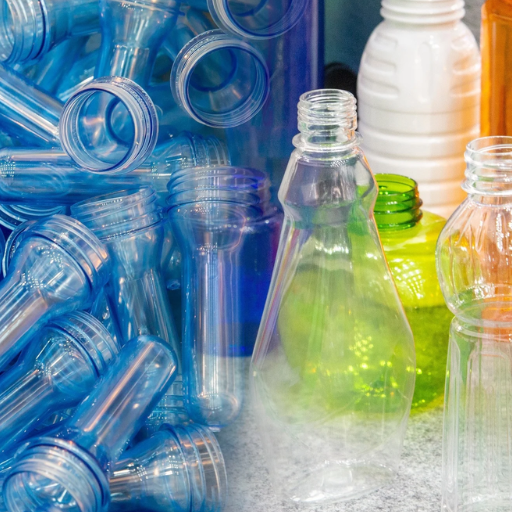
The petrochemical industry is the primary source of synthetic polymers utilized in formulating plastics. Polyethylene (PE), a resin with diverse applications most prominently in attenuated membranes, bags, and containers, holds potential because it is expected to Last For Decades. Polypropylene (PP) is another example that is strong, resists other chemicals and has many applications. Used in construction goods like pipes and sheeting materials, Poly polyvinyl chloride (PVC) is also a major product. Styrene (PS) is widely used in disposable cutlery and container production, as well as general-purpose packaging. Electronics and automobile components employ higher-end materials such as polycarbonate (PC) or acrylonitrile butadiene styrene (ABS) engineering thermoplastics. Bioplastics that come from renewable sources, such as starch sourced from corn, are emerging due to sustainable demand. The stated materials are selected based on the varying mechanical, thermal, and viewing properties needed for the intended use.
Understanding Plastic Pellets and Their Role
The raw materials of numerous end products are plastic pellets, or nurdles as they are more popularly known. From packaging to automotive pieces, these bead-shaped materials are used due to their easy transportation, adaptability, and economical value. They are critical in meeting the modern standards of the enhanced global economy. Mismanagement of oil can and does lead to a vast range of environmental issues, including the contamination of rivers and ecosystems, but is easily solved with efficient education regarding their disposal and use.
Components and Materials Used in Plastic Manufacturing
The invention of plastic products requires several raw materials and components to complete its synthesis. A few of the primary constituents are petrochemicals like ethylene, propylene, and styrene which can be found in natural gas or crude oil. These basic hydrocarbons undergo various processes such as polymerization which turns them into polymers. Other polymers such as copy-markable polymers composed of English and French words can be formed by incorporating special additives. Other key additives including plasticizers, stabilizers, pigments and fillers are also blended into the plastics to improve their strength, suppleness, color, and other specific features. Unlike in past years, corn-made starch or polylactic acid (PLA) is now used to produce biopolymers which offer a less harmful approach to making plastics compared to using petrochemicals. Businesses in the modern eco era can now focus on finding new alternatives that fulfill current market needs without harming the environment while studying all the elements of plastic synthesis.
Environmental Considerations and Plastic Waste
Issues concerning the environment, such as plastic waste, are seemingly increasing in importance because of their impacts on ecosystems. This boils down to how persistent plastics are in nature and the difficulty we face trying to dispose of them. One problem is the use of non-biodegradable plastics, which need to be reduced to prevent plastic waste from harming the environment for long periods. While in principle the invention of biodegradable plastics, like polylactic acid (PLA) offers some hope, these also come along with technical parameters such as a decomposition temperature range of 50 to 70 degrees Celsius and a breakdown period of 3 to 6 months under industrial composting conditions. Additionally, enhancing recycling rates through improvement in mechanical or chemical processes brings potential. For example, PET plastics can obtain recycling rates of as much as 90% under optimized conditions.
To help reduce plastic waste, manufacturers can make use of recycled content as well as design products to aid for easier dissembling for recyclability. Furthermore, states and industries are putting into place policies such as extended producer responsibility (EPR) systems alongside single-use plastic bans to address the growing waste problem. By contemplating such matters along with workable technical methods towards resolving the issue, we can hope to lessen the issues revolving around the use of plastic on a global scale.
What Is the Future of Plastic Manufacturing?
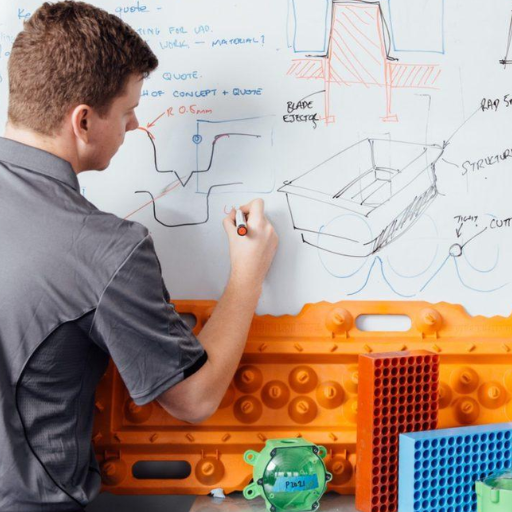
Bioplastics and recyclable materials are slowly replacing traditional plastics due to their less harmful impact on the environment. The future of plastic manufacturing will focus on sustainability, innovation, and efficiency. Emerging technologies such as 3D printing and chemical recycling prove to help improve manufacturing processes and extend product lifecycle. Stricter regulations and global policies aimed at reducing plastic waste are also being put in place. These policies, along with increased efforts to encourage the use of environmentally friendly materials will help plastic manufacturers adopt sustainable practices. Lastly, a joint effort from the government, industries, and consumers will prove effective in achieving these goals.
Innovations in Plastic Manufacturing
Plastic manufacturing innovations are changing the way materials are produced and dealt with by bioplastics and boosting efficiency towards more sustainable goals. Chemically recycling technologies are also ensuring the production of indefinite high-quality recycled materials by breaking down utilized plastic into its original monomers. The developments in 3D printing also increase precision and customization of manufacturing processes which ultimately leads to a significant reduction of material waste. This along with the implementation of AI and Smart automation boosts energy savings alongside carbon cut emissions efficiency which all pushes the industry towards a eco-friendly future.
Reducing the Environmental Impact of Plastic Production
To minimize the ecological consequences linked to the production of plastic, I emphasize the adoption of sustainable technologies and practices. For example, employing bioplastics from renewable sources lowers reliance on fossil fuels, diminishing greenhouse gas emissions. I also emphasize chemical recycling methods, which further enable the breakdown of plastics into monomers, thus fostering a circular economy. The use of AI in production monitoring and energy-efficient machinery helps lower energy consumption and optimize resource use. Furthermore, 3D printing along with other precise manufacturing techniques makes production waste reduction easier. For technical parameters, I set recycling methods to a minimum recovery rate of 90%, limit energy expenditure during manufacturing to under 1kWh/kg of plastic produced, and mandate bioplastic inclusion to not less than 20% of total production materials. Collectively, these measures aid in the attainment of a more sustainable plastic industry.
The Role of Sustainability in the Manufacturing Industry
Sustainability in manufacturing means trying to lessen the negative effects on the environment during processes such as economic growth, as well as industrial innovations. Important methods include advancing energy conservation, resource consumption, and waste generation. The use of renewable energy sources, like wind or solar power, can help reduce carbon emissions during industrial processes. Switching to bioplastics, or other recycled inputs, helps preserve non-renewable resources which are vital in supporting a circular economy.
Furthermore, adopting new technologies such as IoT and machine learning enables better monitoring of energy consumption, waste elimination, and even streamlining of tasks. Transparency and sustainability are two goals that a manufacturer can achieve through enhanced decision-making enabled by data access innovations. The adoption of these standards is made possible through government policies, business incentives, and consumer demand for eco-friendly goods. These strategic policies help resolve global environmental issues, mitigate the impacts of consuming renewable resources, and secure enduring balance in the manufacturing sector.
References
Frequently Asked Questions (FAQ)
Q: What are the main types of plastic manufacturing processes?
A: The main types of plastic manufacturing processes include injection molding, blow molding, extrusion, and thermoforming. Each process involves different techniques and is suitable for creating a variety of plastic products.
Q: How does the injection molding process work?
A: Injection molding is a manufacturing process that involves melting the plastic material and injecting it into a mold. Once the plastic cools and solidifies, the mold is opened to release the finished product. This process is commonly used for producing a large amount of plastic parts with high precision.
Q: What is blow molding, and what products can it create?
A: Blow molding is a manufacturing process used to create hollow plastic parts. The process involves inflating a heated plastic tube until it forms the shape of a mold. Common products include bottles, containers, and other hollow plastic items.
Q: How does extrusion differ from other manufacturing processes for plastics?
A: Extrusion is a process that involves pushing melted plastic through a die to create continuous shapes like pipes, tubes, and sheets. Compared to other manufacturing processes, extrusion is ideal for producing long, uniform products.
Q: What are some challenges associated with plastic manufacturing?
A: Challenges associated with plastic manufacturing include environmental concerns, such as the need to reduce the amount of plastic waste, and technical challenges like maintaining consistency in product quality and dealing with complex molds.
Q: Why is the choice of manufacturing process important for plastic products?
A: The choice of manufacturing process is important because it affects the quality, cost, and suitability of the plastic product for its intended use. Different types of plastic manufacturing processes are better suited for different product specifications and production volumes.
Q: What types of raw materials are used in plastic manufacturing?
A: Raw materials used in plastic manufacturing include plastic pellets, granules, and plastic powder. These materials are melted and shaped into the desired product through various manufacturing processes.
Q: How can manufacturers reduce the amount of plastic used in production?
A: Manufacturers can reduce the amount of plastic by optimizing product designs, using recycled materials, and employing efficient manufacturing techniques that minimize waste. These practices help in creating more sustainable plastic products.
Q: What techniques are used to create hollow plastic products?
A: Techniques like blow molding and rotational molding are commonly used to create hollow plastic products. These processes involve molding techniques that shape plastic into hollow forms suitable for containers and other similar items.

